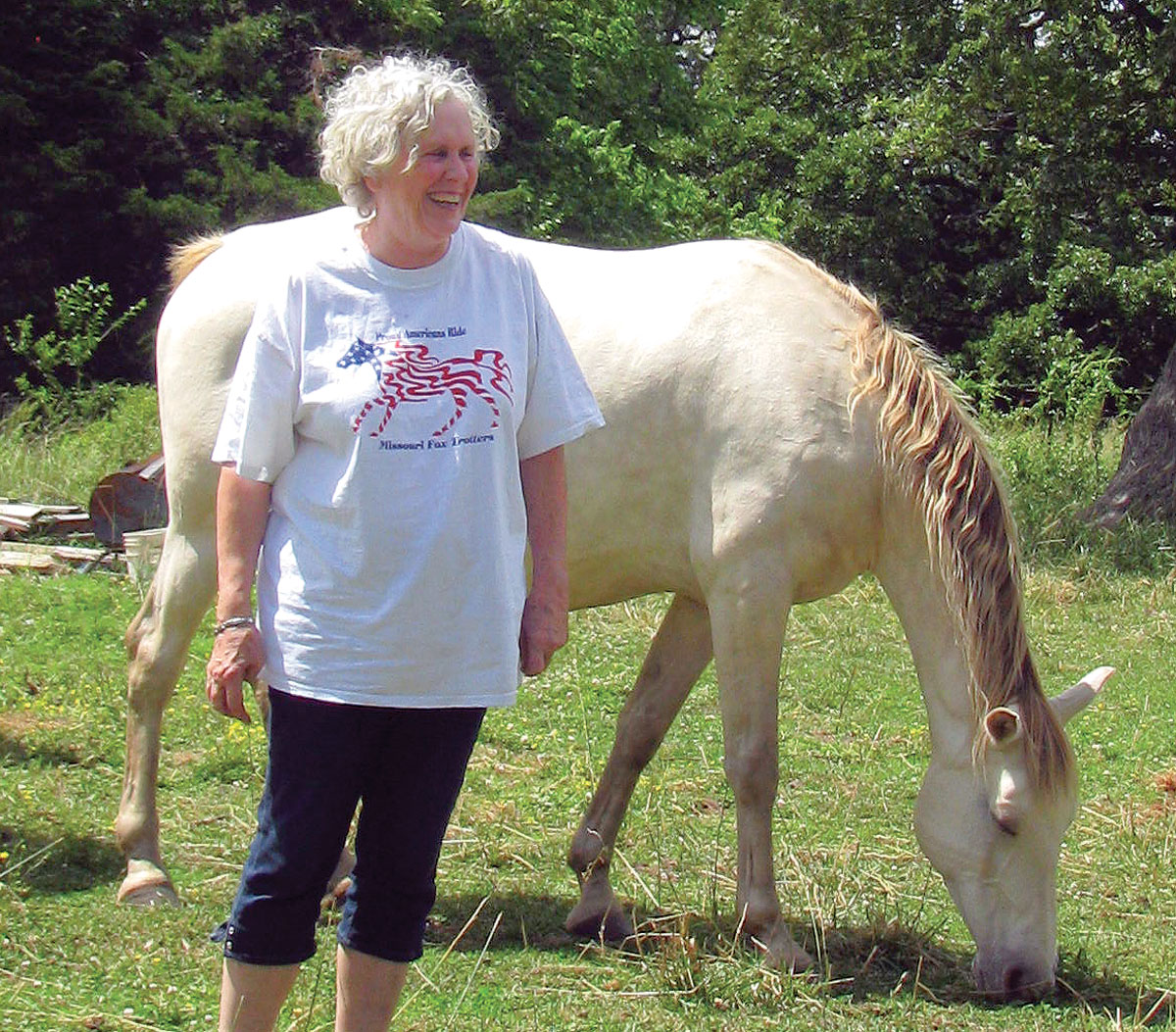
Ann Quinn owns and operates Dreamaker Farms located on the outskirts of Niangua, Mo., in Webster County. There she raises Dominant Curly Missouri Foxtrotters. She has 22 horses, but not all are “Curlies.”
“One-fourth of one percent of the equine population has the curly coat. That’s how rare they are. People who are allergic to straight-haired horses often can ride and handle them because they do not produce a dander like the straight-haired horse. So that’s their particular niche. The fact that people who are used to paying doctor’s bills have to have them if they want to ride,” She explained.
Ann started with basically Foxtrotting horses, but now specializes in Dominant Curly Missouri Foxtrotters.
“When the kids were young, we showed a little bit,” she said. “We just had common Foxtrotting horses. I’ve been a teacher all my life. I’ve got a science major. That’s about the time that all the genetic testing came about for the horses. We got into the horse business on a serious basis. I looked at other breeds and saw the spotted horses were very popular. The Arabians were very expensive. So many of our horses were sorrel. That’s the most common color. So we found through the genetic testing that you could take a white (actually cream-colored) horse and you could dilute that red coat to be either palomino, or buckskin, or smoky black; you could put the gold on them. And very few people buy a horse lacking in color and pay much money for it. The common sorrel horse is not going to bring as much money as the horse standing beside it that’s golden; that’s palomino or buckskin of the Old West. They want color on their backs.
“Through genetic testing, we knew we had one of three of the original Foxtrotting horses that were diagnosed by the genetic test to be homozygous for the Tobiano gene. We actually did a little embryo transfer because we didn’t have but one mare that was homozygous.”
Ann said in the past they had a production sale in the fall and produce about 30 colts a year.
“The people that bred at the farm could bring their colts,” she said. “It was a seedstock kind of deal, much like the cattle do. Your horse had to meet specifications. You had to send a video of it. It had to have its registration papers. It had to be clean and fat when you weaned it from its mother. The first year we had a homozygous colt to sell was the second year into our production sale. That colt brought $10,000. It was 3 months old.”
People told Ann she couldn’t breed off those papers and those tests. She told them, “We’ll see.” They also said you couldn’t get $500 for a breeding fee from a spotted horse.
“They didn’t want the spotted horses. I said, ‘I’ll just have the spotted horses on my property then.’ Well, the old spotted horse is 24 years old. We collect him. We do a lot of artificial insemination. We do a lot of shipped semen,” Ann said. “He has 385 foals to date and all of them are spotted.”
The Curly Foxtrotters are very hardy.
“They are a very mellow breed. Most of them are very easy to train, and of course they have the soft gait which is very easy on your bad back,” Ann explained. “It doesn’t bounce you in the saddle.”
The curly hair is not a problem in the summer.
“Some of the horses shed out to where they just have hair that looks like poodles. Some of them shed out to where they have kind of a wavy coat,” Ann said. “Some actually shed out to have very few curls. They’ll still have them in their ears and they’ll still have curly eyelashes.”
Ann chose Foxtrotters because she had a bad back.
“The Foxtrotting horse I could ride and get along with,” she said.
Foxtrotters are born with the trait to trot.
“At this point, they are born with the foxtrotting gait. It is a mutation of the running walk and the hard trot, which produced the foxtrot. It was still a diagonal gait like the hard trot, but had the glide, the forward motion of the running walk. Now colts get up and foxtrot when they find their feet,” she said.






